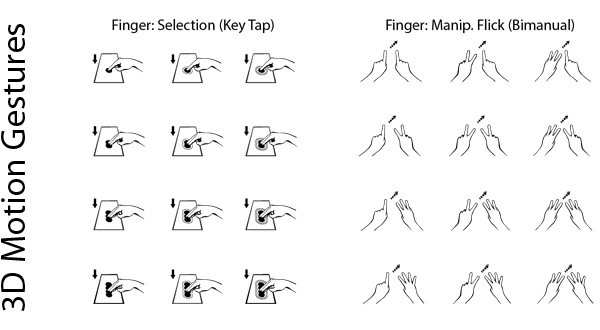Open Exhibits 3.0 Coming in November
Open Exhibits is pleased to announce an upcoming major release, Open Exhibits 3.0. Over a year in the making, this new release provides full 3D support including 3D motion gestures, compatible with the Leap Motion Controller, and 3D rendering capabilities developed in collaboration with Away3D. Other features include an advanced state machine to facilitate game development, a new Visualizer for gesture debugging, and new open source UX elements. Open Exhibits 3.0 is scheduled to be released on November 12, 2013.
Multimodal, multitouch, 3D gestures…what? The hottest new input hardware devices, such as the Leap Motion Controller, allow for an exciting new form of human computer interaction, motion input. The Open Exhibits Team couldn’t wait to get their hands on one. About six months ago we integrated support for the Leap Motion Controller as a 2D alternative to the touch screen. Behind the scenes we were creating a huge library of 3D motion gestures. Fully editable in Gesture Markup Language (GML), these 3D gestures simplify motion development as a natural extension to multitouch. Even better, Open Exhibits 3.0 is multimodal, meaning that all of the these input modes will work at the same time. Use a motion gesture to rotate an object in 3D space with one hand, and tap, swipe, and scroll on the touchscreen with the other.
In addition to 3D motion input, Open Exhibits 3.0 will fully support 3D rendering interaction. Open Exhibits 3.0 simplifies the use of external frameworks, including 3D engines. Open Exhibits has been working with Away3D to create a set of 3D elements that are both touch and motion ready and fully compatible with Creative Markup Language (CML). Rapidly develop applications in AS3 and/or XML without the need to program gestures and 3D transformations.
Aside from 3D support, Open Exhibits 3.0 contains a host of new features and improvements:
-
New state and resource managers automatically reuse and update UX components to facilitate game development and other resource intensive applications.
-
Improved Visualizer allows the debugging of simultaneous multiple input modes and gestures.
-
New UX elements such as the radial slider and page flip add to the already extensive (50+) user interface library.
-
CML asset loading now uses the GreenSock LoaderMax library for more advanced loading options.
- Simplified CML development allows CML objects to infinitely nest and contain gesture tags without the need for additional containers.
by Nora Galler ![]() on September 5, 2013
on September 5, 2013

